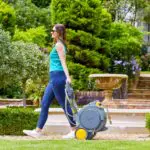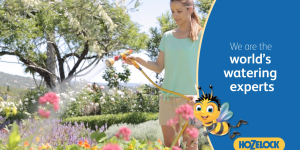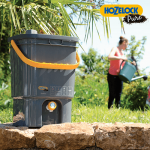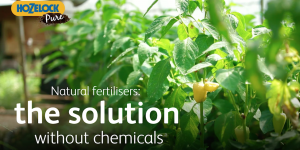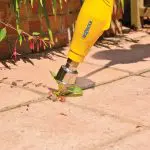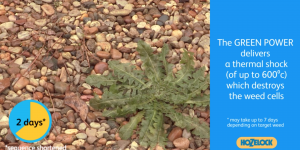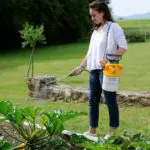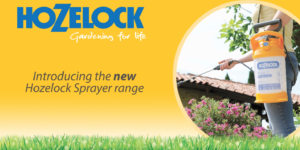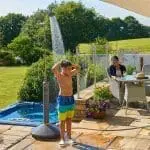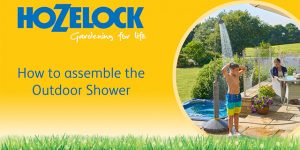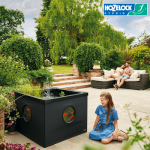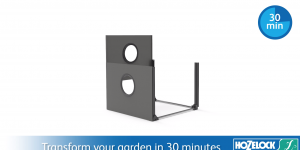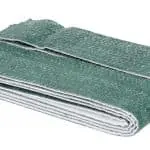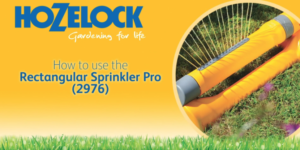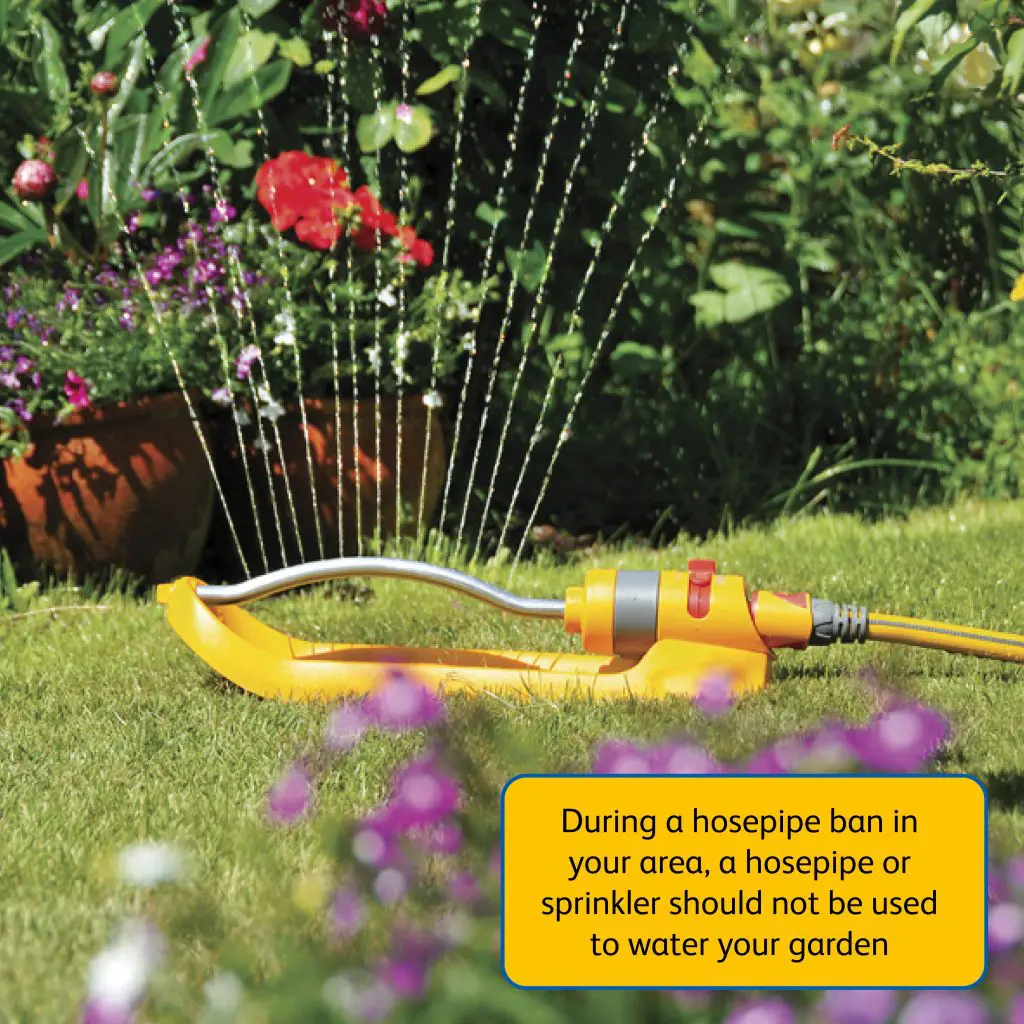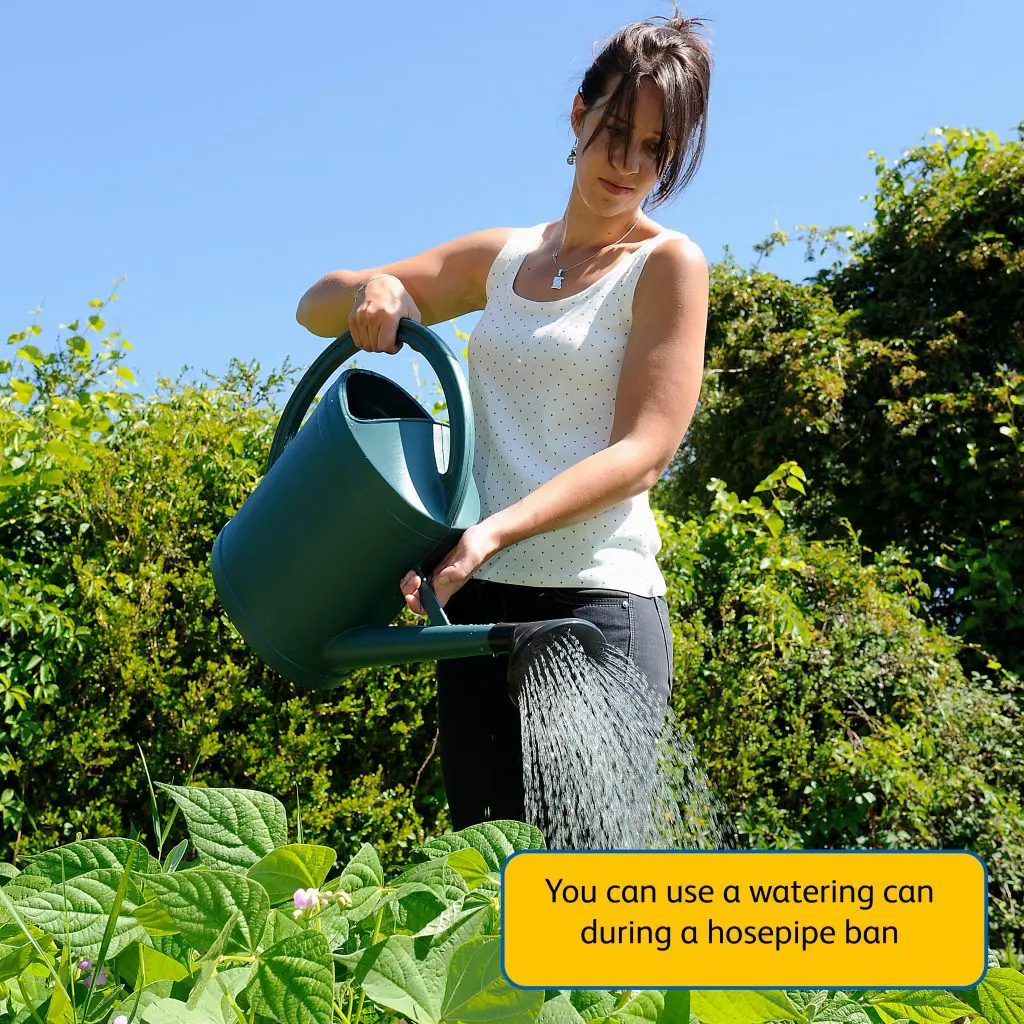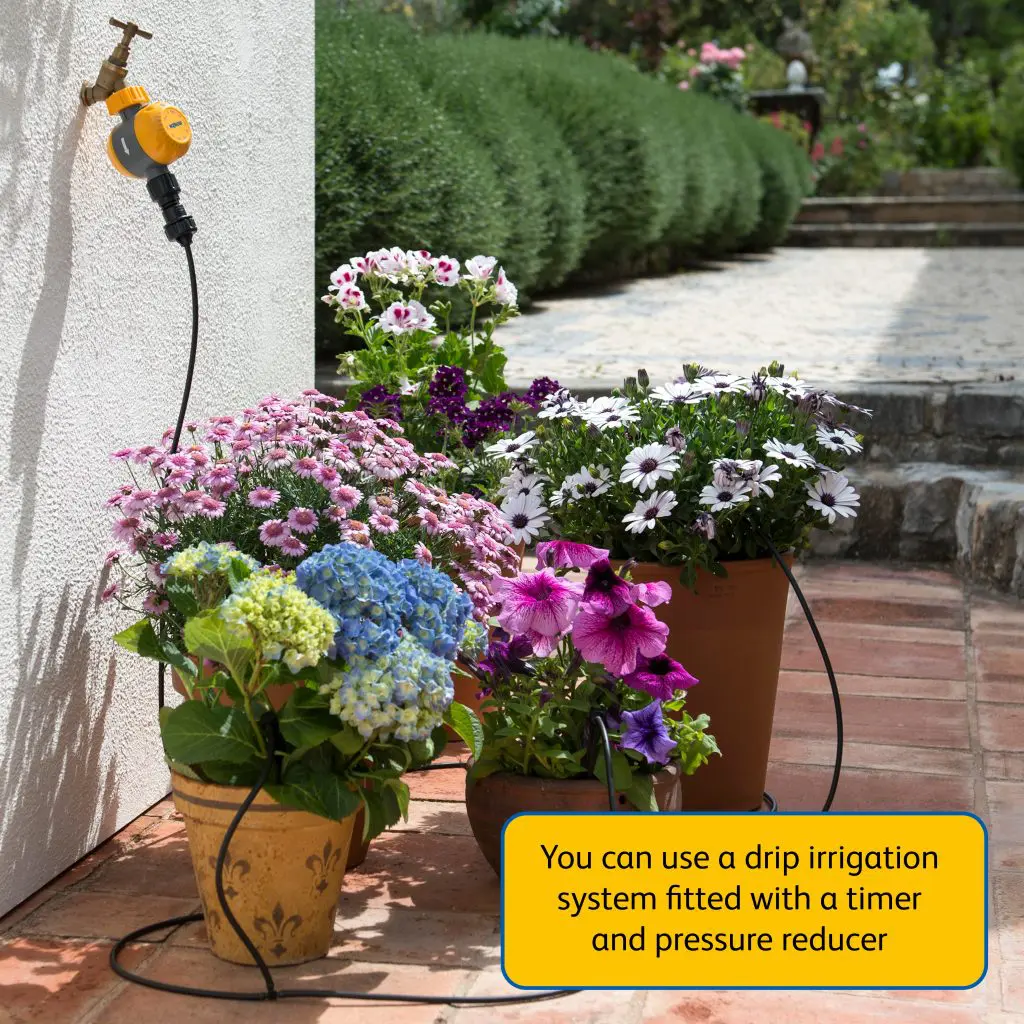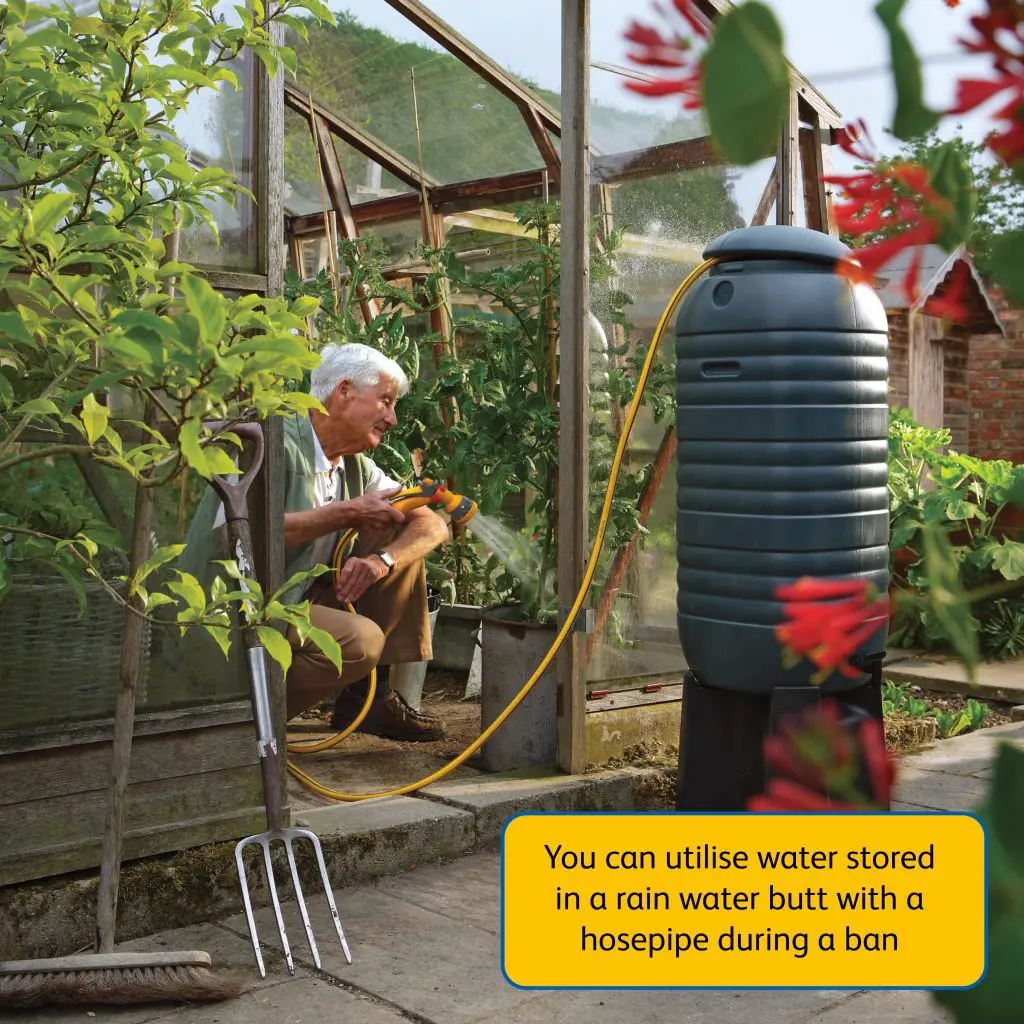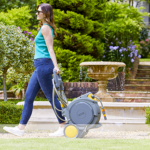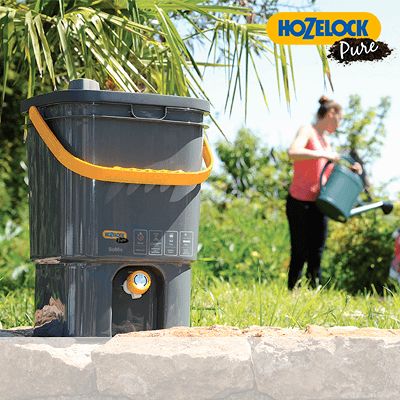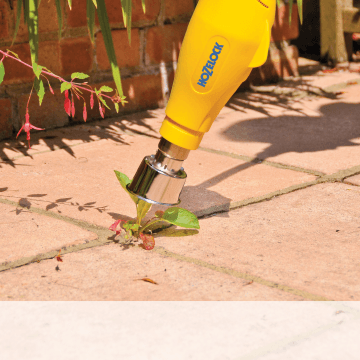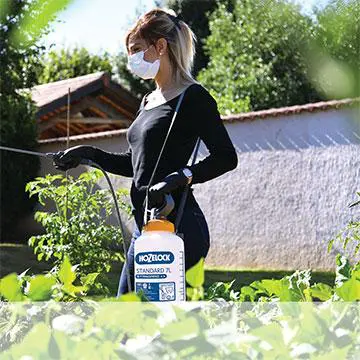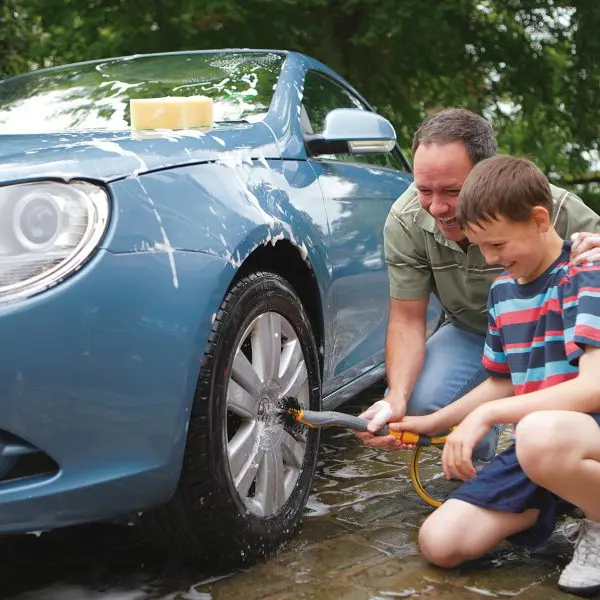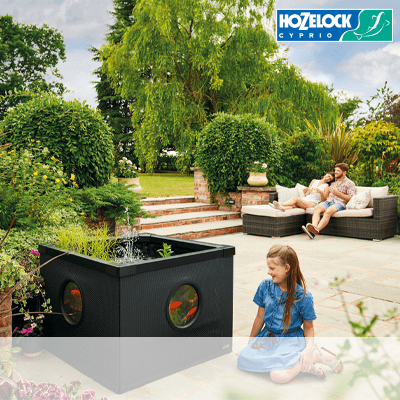During long periods of dry weather and drought conditions, local water companies may choose to implement a hosepipe ban. Visit your water supplier’s website to check for updates in your area and for definitive rules on what you can and can’t do during the ban period. Although you can’t use a hosepipe to water your garden during enforcement, there are still other ways to water your garden during a hosepipe ban.
What is a hosepipe ban?
During a hosepipe ban, where a water supplier is experiencing a serious shortage of water for distribution, different levels of temporary restrictions can be applied by the water supplier, including some or all of the following:
- watering a garden using a hosepipe or sprinkler
- cleaning a private vehicle, such as car, motorbike, van, caravan or boat, using a hosepipe
- watering plants on domestic or other non-commercial premises using a hosepipe
- filling or maintaining a domestic swimming or paddling pool
- drawing water, using a hosepipe, for domestic recreational use
- filling or maintaining a domestic pond using a hosepipe
- filling or maintaining an ornamental fountain
- cleaning walls, or windows, of domestic premises using a hosepipe
- cleaning paths or patios using a hosepipe
- cleaning other artificial outdoor surfaces using a hosepipe
Source: Section 36 of the Flood and Water Management Act of 2010
You should check the rules in your area to see what applies to you in the event of a hosepipe ban. Unless specifically prohibited, many other uses of a garden hose are allowed during a hosepipe ban including hosing down pets and livestock, for DIY tasks such as mixing cement, filling fish ponds and even for hygienic purposes, such as using an outdoor shower.
How do I water my garden during a hosepipe ban? Are there alternative methods I can use?
Watering cans and containers
- The ban only applies to the use of a hosepipe – you can still use a watering can or bucket to water your garden. However this can be time consuming, cumbersome and heavy, particularly if you have a big garden or thirsty vegetable crops. It will certainly make you more aware of how much water you use in the garden!
- Domestic waste water, known as ‘grey water’, can be used in the garden. Plants can be watered with shower, bath, kitchen and washing machine water, collectively referred to as ‘grey’ water. Soil and potting composts are effective at filtering out any soaps or detergents. Consider, everytime you turn the tap on inside the house, whether you can reuse the water – whether you’re washing salad or fruit or cleaning your fish tank, store the water in a container or bucket and reuse in the garden or on your houseplants.
- When you’re using containers like the above to water your garden, prioritise plants such as young plants and seedlings, perennials and shrubs should be established enough to recover after a period without rain. Lawns are very resilient, though in extended periods of summer drought, your lawn may turn brown and stop growing, it will usually recover rapidly when rain starts to fall again.
Drip irrigation
- Drip irrigation systems have been exempt from hosepipe bans and are likely to continue to be exempt. Modern drip irrigation systems are extremely efficient in the distribution of water and can reduce your water consumption by 90%. There is, however, nothing written in law to say that they must be exempt so double check the rules for your area to see if is exempt, like the below examples.
- You should only use irrigation drippers in your system during a hosepipe ban, not irrigation sprinklers. Although a sprinkler is great for larger area coverage, it is not as targeted as a dripper. A dripper irrigation system uses 90% less water than watering the garden with a hosepipe, using only 7 litres of water in 10 minutes. Great for your water bills if you’re on a meter!
Current local exemptions
Hampshire and Isle of Wight:
“Use of an approved drip or trickle irrigation system fitted with a pressure reducing valve and timer”
Source: Southern Water: Hampshire Drought 29th July 2022
Kent and Sussex:
“drip or trickle irrigation watering systems, fitted with a pressure reducing valve and a timer, that are not handheld, that place water drip by drip directly onto the soil surface or beneath the soil surface, without any surface run off or dispersion of water through the air using a jet or mist. These devices are not prohibited under the Temporary Use Ban because they are very water efficient.”
Source: South East Water: TUB FAQs 3rd August 2022
Pembrokeshire and Carmarthenshire:
“Customers using an approved drip or trickle irrigation system fitted with a pressure reducing valve and timer systems.”
Source: Dwr Cymru: Exemptions 8th August 2022
How do I create a drip irrigation system?
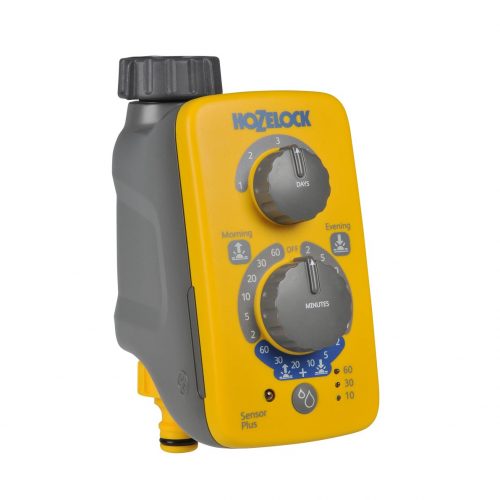
Water timer
Water Timers (sometimes known as controllers) are battery powered timers which attach to your outside tap and turn your tap on and off automatically. This allows you to water at times of day when the water can be best absorbed i.e. early in the morning or at night. When combined with a drip watering system they can be used in a hose pipe ban area.
Hozelock have a range of water timers, to suit your watering needs, including the Sensor Plus Controller which will automatically water at sunrise and sunset using a daylight sensor.
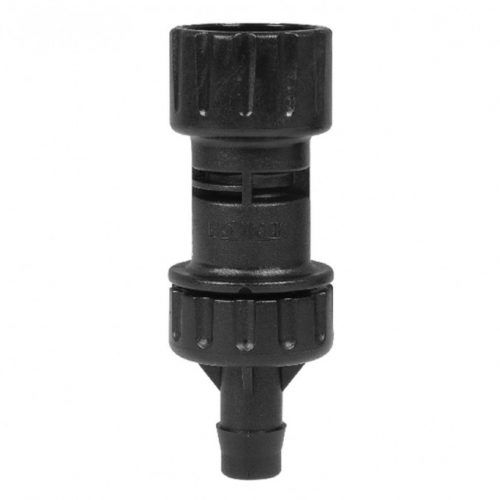
Pressure reducing valve
Reduces the water pressure at the tap to a constant 1.5 bar (20psi). Reducing the pressure at this point ensures that the micro irrigation system is not over pressurised and that performance is optimised.
The Hozelock Pressure Reducer is fitted with a 3/4″ BSP thread, which screws directly onto a water timer. The Pressure Reducer is supplied with two outlet adaptors: 4mm or 13mm. 4mm hose is used to connect micro irrigation kits and 13mm is used as the main supply tube from the tap to the watering point.
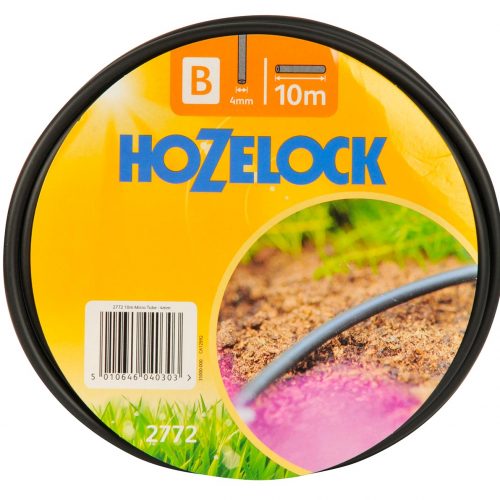
Supply hose
The supply hose then takes the water to where it is needed and enables the construction of a drip irrigation system which is bespoke to your garden. Hozelock provide two types of supply hose:
13mm Supply Tube – The Hozelock 13mm tube is used as the main supply network of the micro irrigation system. It is available in 25m lengths and is the main artery of the irrigation system. The pipe can be buried up to 5cm in the ground or covered with mulch.
4mm Supply Hose – The Hozelock 4mm hose is an ultra-flexible tube which takes water from the main supply network to the drippers to water individual plants. It is very discreet and easy to set up.
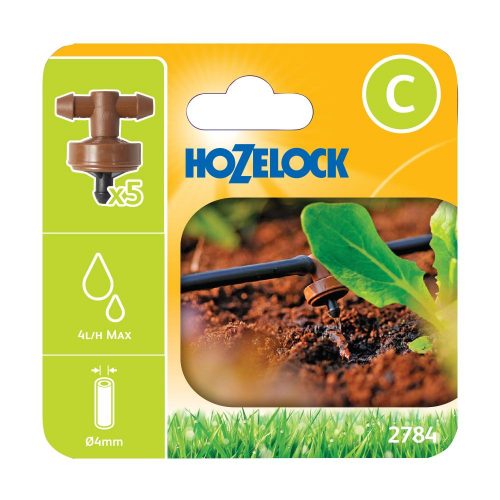
Drippers
Drippers are placed at the end of the hose and water directly at the plant root. Hozelock have a range of drippers with a variety of flow rates to suit a number of different drip watering applications, especially containers and hanging baskets. Here are a couple of examples:
4 LPH Automatic Dripper (2784) – Advanced LPH automatic, in-line pressure compensating dripper.
4 LPH Automatic Dripper (7043) – Advanced LPH automatic, end-of-line pressure compensating dripper comes with a spike and has an in-built filter.
Ready To Use Kits
You can create a drip irrigation system by purchasing the components listed above individually to create your own system, which is bespoke to your garden requirements. Most systems can be installed in a few hours and all can be extended as your garden grows.
Alternatively, the simplest and easiest way to get a quick, drip irrigation watering system is to purchase a ready-to-use kit. Hozelock have 3 kits which are suitable to use in a hose pipe ban area, varying in size from a 15 pot capacity, 20 pots or 25 pots – increasing in the indicated amount of drippers accordingly. These don’t have to be used in patio pots though, you can use the kit in other containers such as hanging baskets or troughs, or use around a vegetable patch or flowerbed.
25 Pot Automatic Watering Kit: this is a great starting point for all drip systems, it’s widely available, and contains everything you need to get started. There is a battery powered Select Controller, 25m of hose to build the network around the garden, and 25 ultra-efficient dippers.
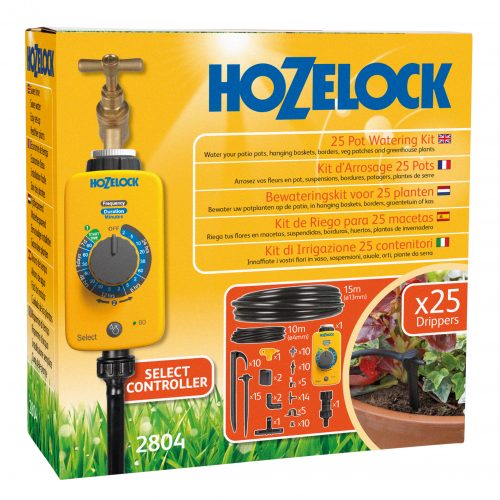
Use a static or harvested water source - such as a rain water butt
- A ban on hosepipe use for garden watering applies only to mains-drawn water and so does not extend to drawing water from a static water store such as a water butt. Therefore, even in a hosepipe ban, water can still be legally drawn for garden use via a hosepipe or irrigation system from a water butt.
- Harvesting rainwater in a water butt helps you to become more environmentally friendly and save water in your garden. This method of watering minimises the amount of tap water used, recycling water that would have otherwise gone down the drain and helps to reduce your water consumption and your water bills. It also has the added benefit of being kinder to plants too because it won’t leave limescale deposits or increase the alkalinity of the soil, especially in hard water areas.
- Hozelock’s Flowmax Collect 2200 is a ready-to-use water butt pump, which you can place within your water butt and simply connects to your existing hosepipe. It is compact for easy installation within water butts and is complete with a float value which automatically cuts the pump off when the water level is too low.
Frequently Asked Questions
What will happen to someone who contravenes a hosepipe restriction?
Does Hozelock have specific water saving products gardeners can use?
I am arthritic and can't carry a watering can, can I still use my hose to water my plants during restrictions?
The water companies have the power to prosecute and impose a fine of up to £1000 for those who contravene the rules in their area.
Yes! We have many water saving products, hints and tips. Visit our water-saving blog to read more about how you can save water in the garden all year round.
There are often exemptions for Blue Badge holders and commercial uses – such as commercial cleaning. Check your water supplier for specific rules.


